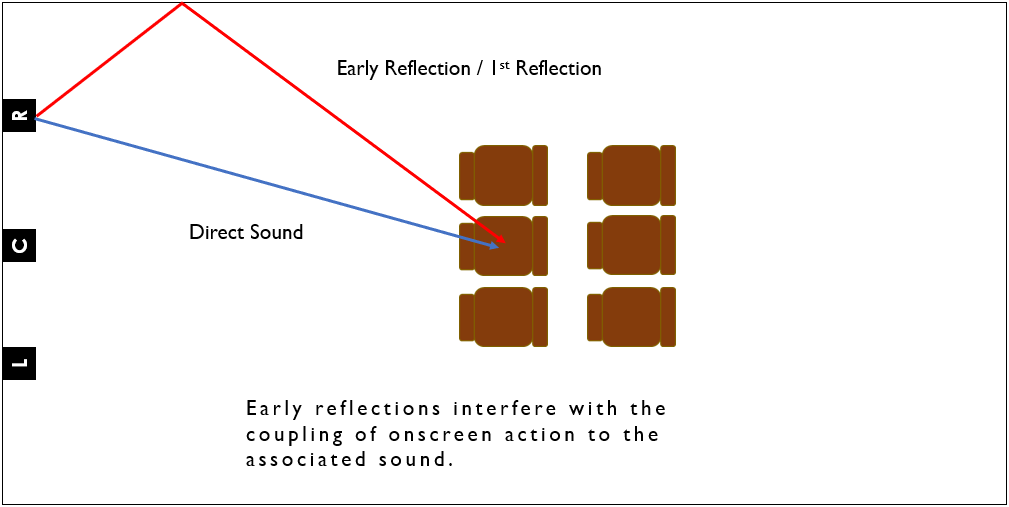In the middle of the 1970s, particularly on the West Coast, dead was in, especially when it came to recording drums. The mindset at the time was to throw as many blankets and carpets as possible in the tracking room to absorb as much of the reverberant energy as possible. This was done in an attempt to make the recording sound more articulate (meaning each instrument was clearly audible in the recording), but the result was some incredibly dry and dead sounding records. Producers and engineers were experimenting, and well, sometimes experiments don’t turn out too well.
Unfortunately, a lot of that mindset has survived, causing confusion for the AV enthusiast who is putting together a dedicated home theater or listening room in their home.
Here’s the rub: the music you will be listening to contains the reverberation signature of the room it was recorded in (concert hall, recording studio). In the case of a movie the recording contains the reverberation signature of the scene the director and audio designer conjured up. The reverberation has been provided for you by the program, so a room that is overly reverberant will interfere with the audio playback as it was intended.
With that in mind, it stands to reason that you should design your room to be as sonically dead as possible, right?
Yes.
And no.
It’s all about early reflections.
Sit in your chair in your prime listening position and look at your speakers (L-C-R), then look at the walls to your left and right. Somewhere along that wall the direct sound from the speaker bounces off the wall and then heads for your ears. This is called the first reflection.

There is a different early reflection point for every possible seating position in the room. There are also four first reflection points for every seating position: the two walls (lateral reflections), the floor and the ceiling. Floor reflections are very rarely a problem because they typically arrive as later reflections that don’t interfere with the direct sound, but the ceiling can play as much a role as the walls when it comes to reflections. In studies of concert halls around the world, researchers found audiences generally find the sound more desirable in a room where the reflections from the ceiling arrive after the lateral reflections. That’s fine for a room with a 20-foot (or higher) ceiling, but in your house, it’s probably better to null the first reflection from the ceiling as well as the lateral reflections.
Null the reflections in the first third of your home theater with absorptive material. By using absorption in the first third of the room you are pretty much ensuring every listening position will be as free as possible from interference from first reflections. In a concert hall those reflections give a sense of intimacy or space (depending on the design of the room), but in your much, much smaller listening space, those reflections only serve to muddy up the sound.
If you can’t simply treat the entire first third of the room, use the mirror method to find the first reflection for your listening position and treat that specific area. Sit in your listening position and have a friend move a mirror along the lateral walls (and the ceiling too!). When you see the speaker in the mirror you have found the first reflection point.
Because you will more than likely need a place to sit, some curtains on the windows, a painting or picture or two, a carpet, some lights, tables and other assorted bric-a-brac, you also treat your room with absorptive (or diffusive) material by default. The things you put in a room play a big role in how a room sounds, so try to keep the reflective decorations to a minimum in that all-important first third of the room. In a home theater and to a lesser extent a dedicated music room, you can’t really over absorb in the first third of the room, including the area behind the screen or television (the front of the room), but one unfortunately placed mirror can wreak havoc on how your system sounds!
The second third of the room benefits from reflective surfaces which will make the surround effects more life-like.




